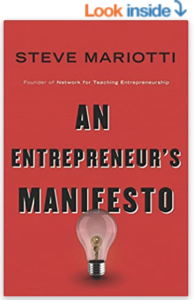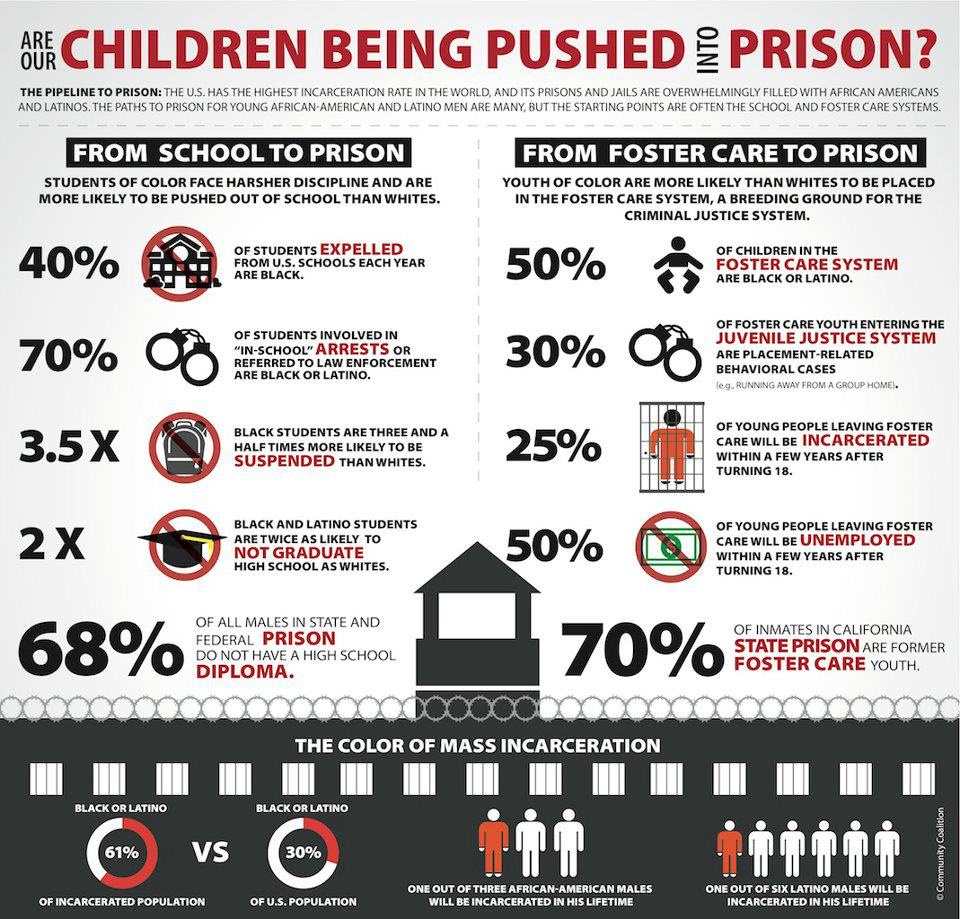Let Low-Income People in Prisons and Schools Work
Rather than blame politicians for creating, and unions for expanding, restrictive labor regulations, it makes sense to focus on economic misunderstandings. People seem to think jobs are somehow limited and fixed by forces beyond our control. In reality, job opportunities are infinite and limited only by imagination and ingenuity.
Misguided monetary and regulatory policies can darken the picture, but NCFCA debaters can open new worlds of economic opportunity with their affirmative cases. Why not start by helping the poor and disadvantaged?
Millions in America are locked up in state and federal institutions, lacking access to employment opportunities that would allow them to earn money and learn job skills. The cost, waste, and dangers of America’s prisons are discussed in other posts, but here let’s consider another American institution, unique in world history, where millions are “locked up” each day without access to employment opportunities.
I can’t speak for the specific challenges of students in inner-city schools, but I can draw from memories of middle and high school: I didn’t like not having money and I didn’t like having to work (especially homework). Life seemed unfair in my world of limited experience and knowledge. With little idea how fortunate I was, I focused on reading comic books, fantasy novels, and playing basketball, and expended much effort to avoid doing homework.
We were fortunate that my father earned enough money so I didn’t have to work during my teen years. Or was I unfortunate in not having to work? I still enjoy basketball and fantasy novels. Through those formative teen years, what if I had been drawn into high school debate, or into after-school jobs at any of the dozens of nearby firms, earning money to spend, save, and invest?
I know how I spend most of my hours during middle and high school. Working ten or even twenty hours a week would still have left time for basketball and reading (though less for watching television). Of course it is easy to say now that I wish I had worked harder in the past.
Work can be punishment if forced upon teens. But work can open a world of opportunity when voluntary. Young people invest vast hours in video game problem solving. If allowed and encouraged to shift their efforts to productive work, that focus could put students on any of a thousand paths to discovery, self-reliance, and prosperity.
Steve Mariotti discovered this intense interest in creating wealth while teaching inner-city students in New York City. Dropped into a class teaching the schools “worst” and lowest-performing students, Mariotti struggled through a semester teaching from his textbooks. His students hated the textbooks and hated him. Finally he asked students if there was anything he had taught that interested them, and he was astonished to discover they had paid close attention to his discussion, early in the year, of his successful business experience in retail. They remembered everything and wanted to know more.
These students didn’t like being poor. They didn’t like being institutionalized and having their time wasted each day. They could see vast wealth on television and wanted to learn how they too could make their way in the world.
 |
| Look Inside on Amazon. |
Steve Mariotti developed hands-on programs where teens combined learning school lessons with learning to start their own businesses. He founded what is now the Network for Teaching Entrepreneurship, and is author of the book, An Entrepreneur’s Manifesto.
Steve Mariotti explains:
I wrote An Entrepreneur’s Manifesto because I believe entrepreneurship education and policies that encourage entrepreneurship are the most practical ways to address the ills plaguing the world today, from dangerously high levels of youth unemployment to terrorism and the wealth gap. I hope to inspire an Entrepreneurship Revolution that will transform the global economy and usher in a new surge in peace, prosperity, democracy and freedom worldwide.
Since founding the Network for Teaching Entrepreneurship (NFTE) in 1987 to bring entrepreneurship education to at-risk youth I have seen extraordinary transformations among young people exposed to entrepreneurship. At the time, I was a failing special-education teacher unable to reach or teach the rowdy students in my Bed-Stuy high school. One especially rough day, I stepped out of the classroom to try to compose myself. In a desperate move, I took off my watch and marched back in with an impromptu sales pitch for it. To my astonishment, my students were riveted and stayed with me through a lesson on sales, wholesale and retail costs, and return on investment.
I had stumbled onto the truth: these kids were far more frustrated than I was. They felt so disconnected from our economic system that they saw no futures for themselves and no reason to pay attention in school. When I taught them how to start and run simple small businesses, they quickly grasped the connection between learning and earning money. They became excited to read, write, do math, and behave better.
The Reform Pipeline from City Schools to Prisons
How could federal prison reform open doors to entrepreneurship and enterprise for thousands more Americans? Back to problem of economic ignorance: too many see labor markets as limited and somehow locked down. They fear that allowing millions of teens open access to safe and productive work would push older workers out of the labor force. Federal labor regulators argued that companies would “fire the father and hire the son”– and at significantly lower wages. But there is much more to the story.
Mixed-up monetary policy has played a role creating or making worse the many booms and busts through U.S. history, and turned a financial downturn into the Great Depression, as mentioned in this Reason.com post, “Milton Friedman Saw the Euro Crisis Coming“:
The work of Friedman and Schwartz opened the door to the neoliberal revolution of the 1970s and ’80s by showing that bad monetary policy had destabilized an otherwise well-functioning economy. By the 1990s even many liberal economists had concluded that market economies work, so long as monetary policy makers provide a stable backdrop.
(For more in this economic history, see Ivan Pongracic Jr.’s article: “The Great Depression According to Milton Friedman: The Great Depression Could Have Been Avoided if the Fed Had Not So Badly Botched Its Monetary Policy.)
Misguided monetary policy and the Great Depression of the 1930s, dramatically increased unemployment, with one-quarter of Americans were out of work. Gene Smiley writes, in his EconLib.org post:
Although the Great Depression was relatively mild in some countries, it was severe in others, particularly in the United States, where,at its nadir in 1933, 25 percent of all workers and 37 percent of all nonfarm workers were completely out of work.
This high level of unemployment gave support to counterproductive labor policies and programs, which included pushing old people and young people from the labor force and job market. Social Security encouraged older Americans to retire by transferring taxes taken from those still working. These transfers helped elderly people who couldn’t find work or who had little or no savings. But a major legislative motivation was to reduce unemployment.
In 1938 Congress passed the Fair Labor Standards Act which made it illegal for anyone under 16 to work during school hours (plus other restrictions). The idea here too was to reduce the unemployment rate, leaving more jobs to adults, as well as to address long-standing concern about child labor.
Now decades have passed and the economy has shifted dramatically to technology and service jobs that millions of young people and elderly people could learn to do safely and efficiently.
People’s right to gainful employment should be protected by federal courts. State and federal regulations (including truancy regulations) that prevent young people from gainful employment lock poor teens into the ongoing cycle of daily boredom in poorly-managed and sometimes dangerous government schools.
Way too many of these poor, bored, and angry students from inner-city schools move on to another mismanaged government institution, where they again lack access to productive work.
Prisoners are another segment of society not allowed to engage in productive work. In 1885 three-quarters of U.S. prisoners were working, most for private contractors. Again regulators and the public fear prisoners would contribute to unemployment.
There are many articles and studies on the “school to prison pipeline.” Most call for more money for schools or various prison reforms. But one way to inject billions of dollars, along with effective job-training, into inner-city schools (and prisons), is to allow the incarcerated millions access to the employment opportunities.


1 Response
[…] Penal Reform Many past Economic Thinking posts on prison reform here. Including Let Low-Income People in Prisons and Schools Work, Economic Freedom for Federal Courts: Prison Vouchers, and Restorative Justice for Federal Court […]